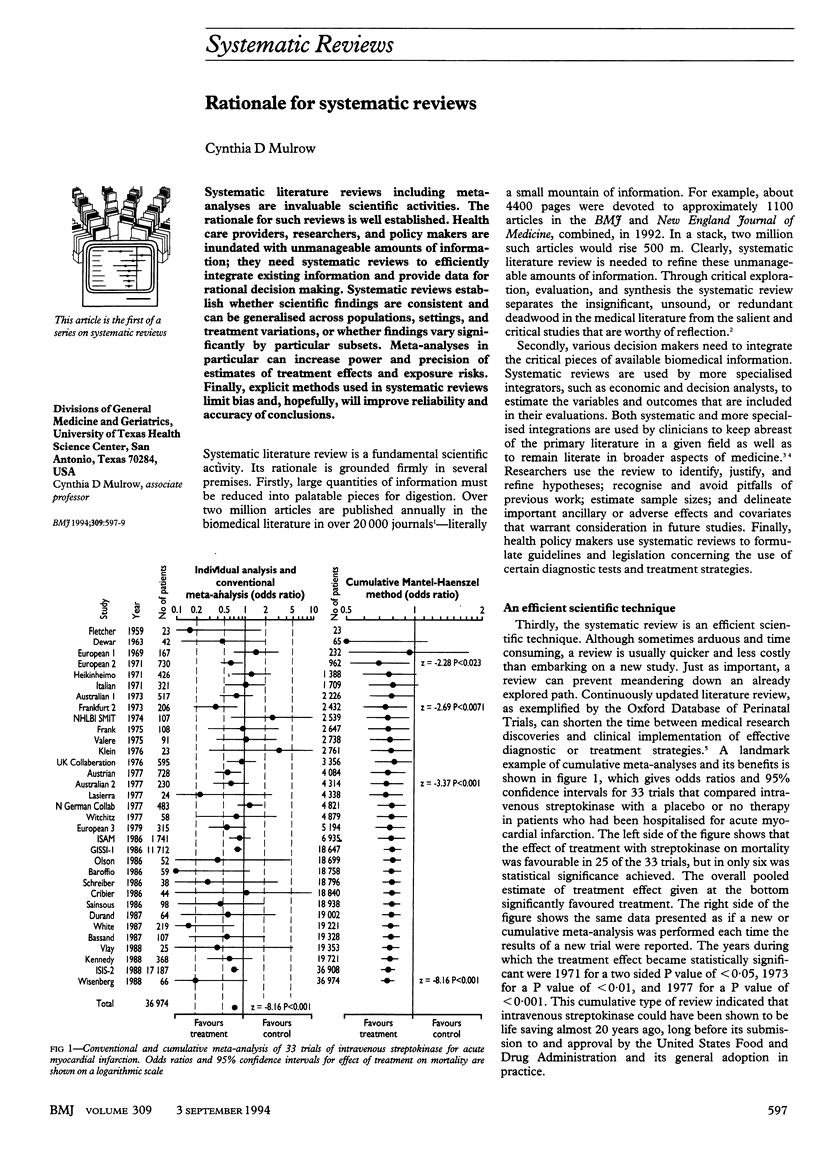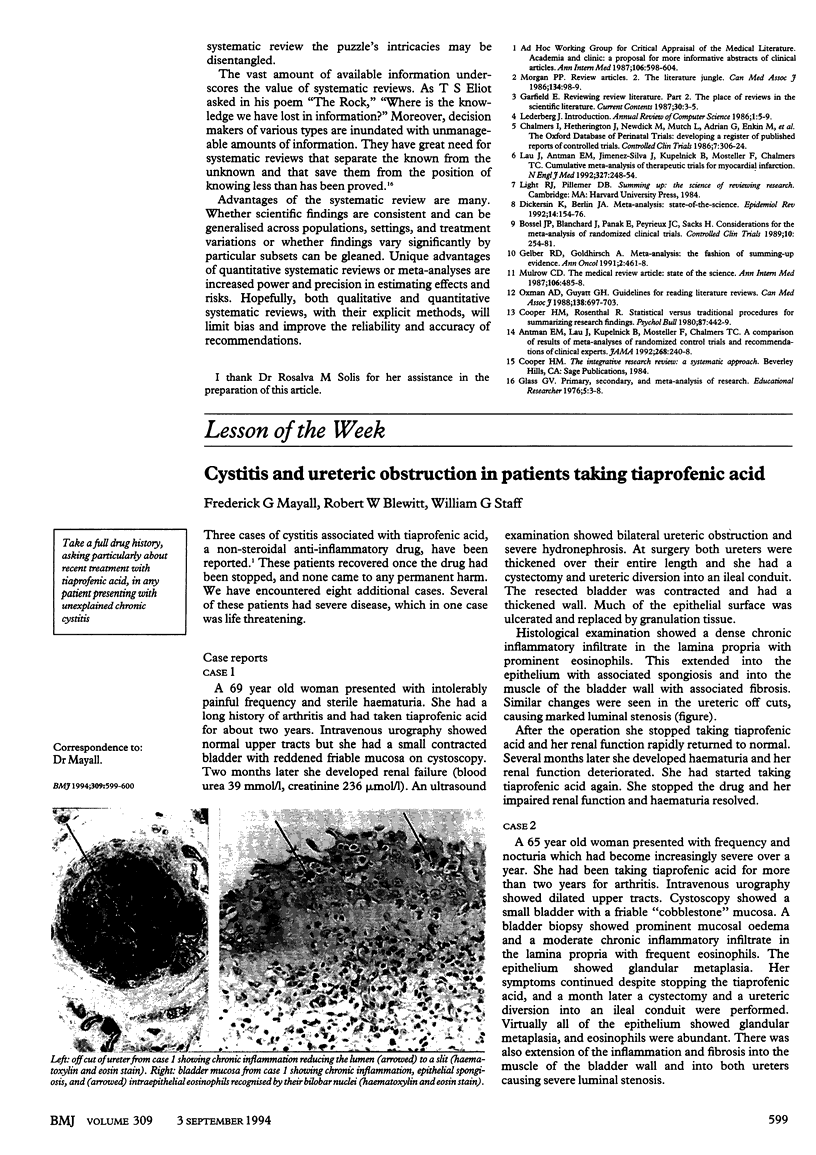Abstract
Systematic literature reviews including meta-analyses are invaluable scientific activities. The rationale for such reviews is well established. Health care providers, researchers, and policy makers are inundated with unmanageable amounts of information; they need systematic reviews to efficiently integrate existing information and provide data for rational decision making. Systematic reviews establish whether scientific findings are consistent and can be generalised across populations, settings, and treatment variations, or whether findings vary significantly by particular subsets. Meta-analyses in particular can increase power and precision of estimates of treatment effects and exposure risks. Finally, explicit methods used in systematic reviews limit bias and, hopefully, will improve reliability and accuracy of conclusions.
Full text
PDF


Images in this article
Selected References
These references are in PubMed. This may not be the complete list of references from this article.
- Antman E. M., Lau J., Kupelnick B., Mosteller F., Chalmers T. C. A comparison of results of meta-analyses of randomized control trials and recommendations of clinical experts. Treatments for myocardial infarction. JAMA. 1992 Jul 8;268(2):240–248. [PubMed] [Google Scholar]
- Boissel J. P., Blanchard J., Panak E., Peyrieux J. C., Sacks H. Considerations for the meta-analysis of randomized clinical trials. Summary of a panel discussion. Control Clin Trials. 1989 Sep;10(3):254–281. doi: 10.1016/0197-2456(89)90067-6. [DOI] [PubMed] [Google Scholar]
- Chalmers I., Hetherington J., Newdick M., Mutch L., Grant A., Enkin M., Enkin E., Dickersin K. The Oxford Database of Perinatal Trials: developing a register of published reports of controlled trials. Control Clin Trials. 1986 Dec;7(4):306–324. doi: 10.1016/0197-2456(86)90038-3. [DOI] [PubMed] [Google Scholar]
- Cooper H. M., Rosenthal R. Statistical versus traditional procedures for summarizing research findings. Psychol Bull. 1980 May;87(3):442–449. [PubMed] [Google Scholar]
- Dickersin K., Berlin J. A. Meta-analysis: state-of-the-science. Epidemiol Rev. 1992;14:154–176. doi: 10.1093/oxfordjournals.epirev.a036084. [DOI] [PubMed] [Google Scholar]
- Gelber R. D., Goldhirsch A. Meta-analysis: the fashion of summing-up evidence. Part I. Rationale and conduct. Ann Oncol. 1991 Jul;2(7):461–468. doi: 10.1093/oxfordjournals.annonc.a057993. [DOI] [PubMed] [Google Scholar]
- Lau J., Antman E. M., Jimenez-Silva J., Kupelnick B., Mosteller F., Chalmers T. C. Cumulative meta-analysis of therapeutic trials for myocardial infarction. N Engl J Med. 1992 Jul 23;327(4):248–254. doi: 10.1056/NEJM199207233270406. [DOI] [PubMed] [Google Scholar]
- Morgan P. P. Review articles: 2. The literature jungle. CMAJ. 1986 Jan 15;134(2):98–99. [PMC free article] [PubMed] [Google Scholar]
- Mulrow C. D. The medical review article: state of the science. Ann Intern Med. 1987 Mar;106(3):485–488. doi: 10.7326/0003-4819-106-3-485. [DOI] [PubMed] [Google Scholar]
- Oxman A. D., Guyatt G. H. Guidelines for reading literature reviews. CMAJ. 1988 Apr 15;138(8):697–703. [PMC free article] [PubMed] [Google Scholar]



